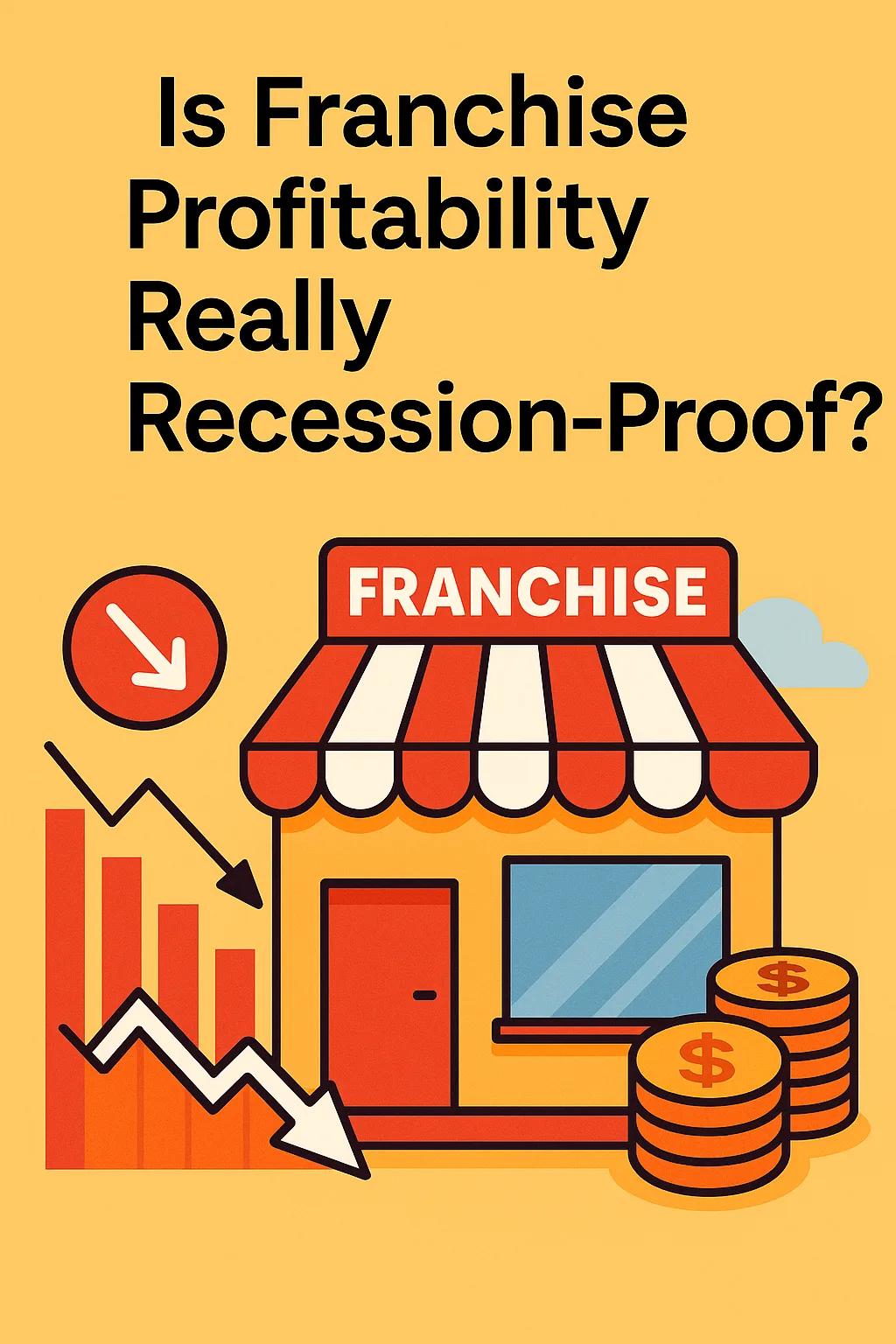
Busting the Myth of “Evergreen” Profits
Franchises in recession-resistant sectors – like fast-food, healthcare, or home services – are often marketed as safe investments. But what if the promise of stable, high returns is more myth than reality? Recent research challenges the assumption that franchise profitability is inherently resilient. While these sectors may weather economic storms better than others, profitability for individual franchisees is far from guaranteed. Let’s dive into what Franchise Disclosure Document (FDD) analyses and academic studies reveal about the hidden complexities of franchise success.
The Rollercoaster of Profitability: Why Franchise Earnings Fluctuate
A 2007 study of restaurant franchises uncovered a harsh truth: profit margins can swing wildly year over year (Park et al.). Factors like over-investment in marketing, inefficient asset use, and rising operating costs (e.g., labor or supply chain disruptions) erode stability. For example, a franchise might thrive during a recession due to demand for affordable dining, only to struggle when costs spike post-crisis. This volatility underscores that recession-resistant doesn’t mean profit-proof.
Franchise vs. Independent: Survival of the Fittest?
Surprisingly, independent businesses often outperform franchises in saturated markets. A landmark 1995 study found that young franchise startups had higher failure rates and lower profitability than independent counterparts (Bates, 1995a; 1995b). Why? Franchisees face rigid fee structures (royalties, marketing levies) that independents avoid, squeezing margins when competition intensifies. In crowded markets, the “brand advantage” can backfire if too many franchisees vie for the same customers.
The Double-Edged Sword of Franchisor Control
Franchise agreements often promise support but can stifle autonomy. Research shows that excessive franchisor control – like mandatory suppliers or restrictive menus – breeds resentment and hurts profitability (Phan et al., 1996). Imagine a café franchise locked into overpriced coffee beans: while brand consistency is maintained, local cost-cutting opportunities vanish. Successful franchises strike a balance, empowering franchisees to adapt to local conditions without diluting the brand.
Marketing: A Tool for Growth or Conflict?
Strategic marketing drives profits, but scaling stores recklessly doesn’t. A 2021 study found that while targeted ads boost brand equity and sales, overcrowding markets with too many franchises triggers internal competition (Lee et al.). Picture two competing franchise pizza outlets in the same suburb: both pay royalties, but neither thrives. Smart franchisors prioritize same-store growth over unchecked expansion.
Sector Secrets: The Goldilocks Zone of Franchising
Not all industries operate the same. In hospitality, an optimal mix of franchised and company-owned stores maximizes profitability. Research on restaurants found that firms with 60–70% franchised units outperformed peers (Hsu & Jang, 2009). Too few franchises? Missed growth. Too many? Quality control slips. Similarly, franchisees in strong brands recoup fees through customer loyalty, while weak brands offer poor ROI (Baucus et al., 1993).
Key Takeaways for Aspiring Franchise Owners
- Due Diligence is Non-Negotiable: Scrutinize FDDs for fee structures, market saturation, and franchisor support.
- Negotiate Flexibility: Seek contracts allowing local adaptations (e.g., seasonal menus).
- Monitor Adjacent Franchises: Avoid markets where franchisor over-expansion threatens your territory.
- Plan for Volatility: Build reserves for cost spikes, even in “recession-resistant” sectors.
Profitability Isn’t Guaranteed – It’s Earned
Franchising in resilient sectors offers opportunities, but success hinges on strategy, not luck. By understanding sector dynamics, negotiating balanced contracts, and adapting to local needs, franchisees can tilt the odds in their favor. As the data shows, profitability isn’t a perk of the franchise model – it’s a reward for savvy management.
References
- Bates, T. (1995a). A comparison of franchise and independent small business survival rates. Small Business Economics, 7, 377–388. https://doi.org/10.1007/BF01302738
- Bates, T. (1995b). Analysis of survival rates among franchise and independent small business startups. Journal of Small Business Management, 33(2), 26–36.
- Baucus, D., Baucus, M., & Human, S. (1993). Choosing a franchise: How base fees and royalties relate to the value of the franchise. Journal of Small Business Management, 31(4), 91–104.
- Hsu, L., & Jang, S. (2009). Effects of restaurant franchising: Does an optimal franchise proportion exist? International Journal of Hospitality Management, 28(2), 204–211. https://doi.org/10.1016/j.ijhm.2008.07.002
- Lee, E., Kim, J., & Rhee, C. (2021). Effects of marketing decisions on brand equity and franchise performance. Sustainability, 13(6), 3391. https://doi.org/10.3390/su13063391
- Park, H., Shin, S., Yang, I., & Choi, K. (2007). Analysis of profitability and its affecting factors in restaurant franchise firms. Korean Journal of Food and Cookery Science, 23(2), 270–279.
- Phan, P., Butler, J., & Lee, S. (1996). Crossing mother: Entrepreneur-franchisees’ attempts to reduce franchisor influence. Journal of Business Venturing, 11(5), 379–402. https://doi.org/10.1016/0883-9026(96)00050-X
Ready to dive deeper? Share your franchise journey or questions in the comments.
For data-driven insights, always pair FDD analysis with academic research – because in franchising, knowledge isn’t just power – it’s profit.
